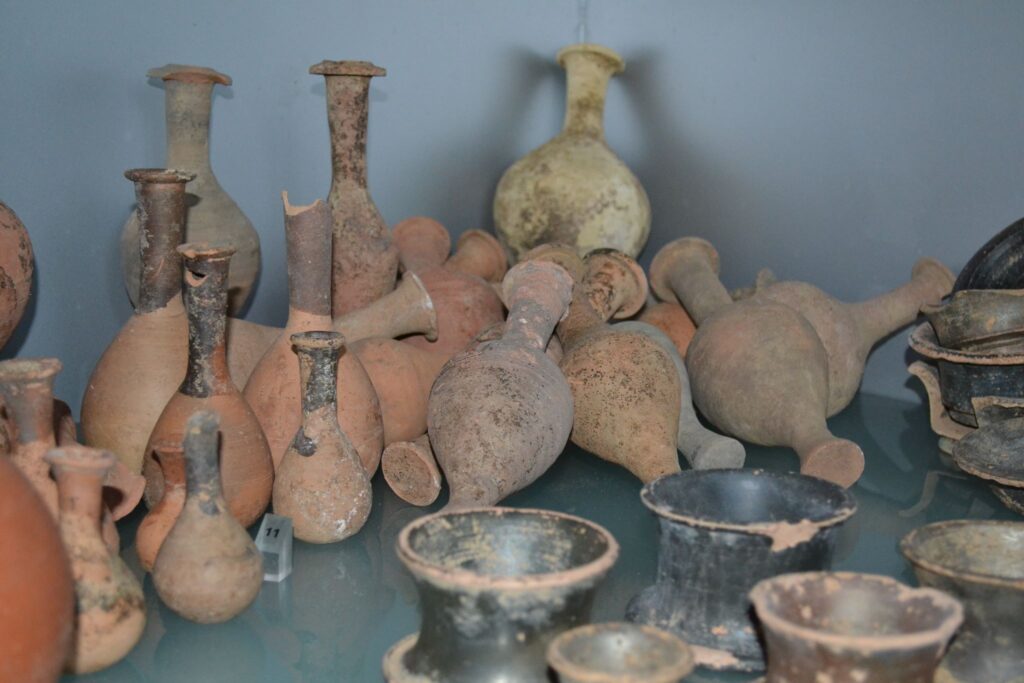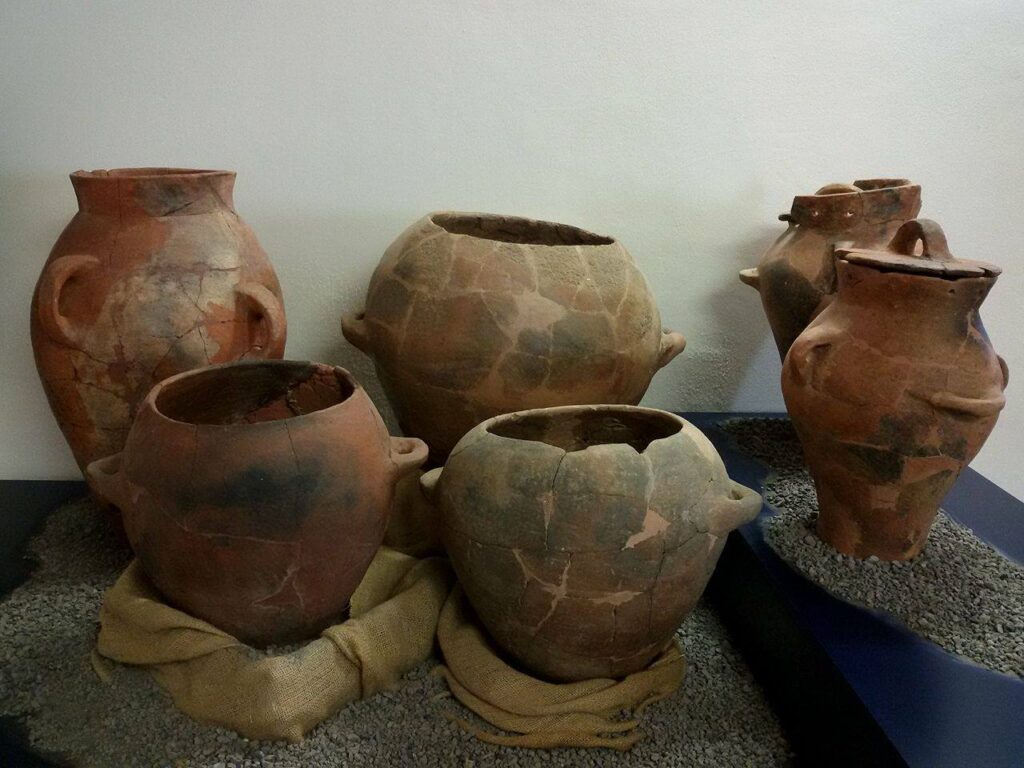Archaeological Museum – Antiquity Rediscovered
Create your own archaeological artifact! Recreate ancient treasures with expert artists in the "Re-create the Artwork" workshop. The best creations become tactile museum exhibits. An experience for everyone, including the visually impaired!
Symbol
Green Pin
Duration
1 hour
Suitable for
All
Description
Inside the museum, there is a small space where visitors can participate in a workshop activity titled “Re-create the Artifact.” With the help of artists, participants will choose and reproduce some of the archaeological finds.
The experience is suitable for all ages. The activity involves selecting three artifacts to reproduce and a jury vote on the pieces created. The materials used will include paper, cardboard, glue, paint, and wire mesh. Once completed, the best reproductions will be displayed in the museum with descriptive plaques and a “Touch Me” label, allowing visitors—including those with low vision—to physically interact with the (replica) artifacts, creating an immersive, tactile experience.
Highlights
From 1972 until 2009, the Archaeological Museum was housed inside the Bourbon Tower of Santa Maria, located above the cove of the same name, while since 2010 it has been relocated to the halls of “Fosso” situated in the town center near Largo Gran Guardia. The facility was set up by the Palermo Cultural Heritage Superintendency and was named after Father Carmelo Seminara, as he was the one who discovered most of the island’s archaeological artifacts and initiated excavation work as early as 1974.
The structure called “Fosso” consists of a complex of three large chambers used during the Fascist era until 1961 to detain political prisoners. Later, from 1962 to 1987, they were repurposed as a primary school. The name “Fosso” comes from an underground cell rediscovered during renovation work around 2009—a secret cubicle located between the first two pavilions of the current museum.
This hypogeal structure has recently been interpreted as a Paleochristian burial site from the 4th–6th century AD, contemporary with those found on the southwestern slope of Falconiera. However, it was later used as a prison during the Bourbon period and then repurposed as a maximum-security cell during Fascism for the most unruly detainees.
The complex consists of three large chambers: one housing artifacts still under restoration, and the other two used for exhibitions. Most of the displayed material was found during excavations at the prehistoric village of Faraglioni (Middle Bronze Age, 1400–1200 BC) and Rocca della Falconiera (Hellenistic-Roman and Late Roman-Byzantine periods, from the 4th century BC to the 6th century AD). However, there are also various findings from different parts of the island and even from underwater discoveries.
In the first chamber, there are five small interconnected rooms dedicated to the island’s prehistory:
– The entrance room houses the ticket office and displays informational panels about the archaeological sites, along with maps illustrating their layouts and general history.
– The second room features a wide exhibition of artifacts in display cases, dating from the Neolithic (6th millennium BC) to the Early and Middle Bronze Age (2300–1200 BC), including:
– Tall-footed cups with handles for communal food consumption while sitting on the ground.
– Quadripartite clay hearth plates (used for cooking).
– Double-handled jars, small-necked amphorae (for food storage).
– Andirons (objects possibly used for cult purposes or as vessel supports).
– Ladles for liquids and spindle whorls for spinning.
– The third room contains imported materials, such as decorated pottery fragments and a Mycenaean fragment of a stirrup jar from the Late Helladic period.
– The fourth room displays more spindle whorls, clay spools, tokens (clay discs made from broken pottery, possibly used as counting units for trade or record-keeping), large flat-bottomed pans, colanders, grinding stones, mortars, pestles (made from volcanic rock for processing wheat into flour and pressing olives for oil), obsidian fragments (used for cutting meat or shaving, sourced from Lipari and Pantelleria), molds for bronze weapons, and miniature vases.
– The fifth and final room completes the prehistoric section with large storage vessels with handles and lids, as well as truncated-conical bucket-shaped vases (like Situlae) decorated with fingerprint impressions.
A few meters away is the second chamber, which covers the Hellenistic to Late Roman antiquity period across three adjoining rooms:
– The first room introduces this era with illustrated panels featuring photos, descriptions, and layouts. It includes underwater finds like an Etruscan fractional amphora from the 6th century BC, fragments of Corinthian and Late Western Greek amphorae (late 5th–early 4th century BC), as well as artifacts from numerous cisterns excavated in the rock at Rocca della Falconiera—such as fragments of cocciopesto or white-tessellated mosaic floors, stucco cornices, wall plaster (a small selection from the Hellenistic period is displayed), tableware, kitchen pottery, amphorae, and oil lamps (dating from the 4th century BC to the 1st century AD). Nearby cases contain miniature vases, unguentaria, and gutti found in Falconiera’s northern section.
– The second and third rooms display artifacts from pit tombs in Falconiera’s western area, dating to the Hellenistic-Roman period, including:
– Amphorae with bone remains.
– Funerary offerings.
– Unguentaria.
– Oil lamps.
– Kitchenware (pans) and tableware (both plain—jugs, bottles—and black-glazed—plates, paterae, cups).
– Other artifacts extending into the Late Roman period.
The exhibition concludes with several transport amphorae found near Santa Maria Cove, dating to the same period.
Recommended clothing
Suitable for public places
Important Notes
3 historical staircases
Steps
Itinerary Data
Recommended Period
from June to September
Time: Between 3:00 PM and 6:00 PM


